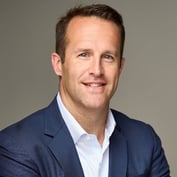Financial advisors and theirclients have a lot to talk about these days–market volatility, historically low interest rates, and a steady stream of corporate, Wall Street, and now mutual fund scandals. On top of that, advisors are operating in an increasingly competitive landscape, as lines blur between the various financial services sectors.
In this kind of environment, effective marketing, rather than traditional sales techniques, can be the key to winning and retaining clients. An effective marketing program for advisors can be built upon six marketing rules of engagement.
Rule 1: Be a Hobgoblin
You know the adage about consistency being the hobgoblin of little minds? Toss it into the trash, because consistency is paramount in maintaining lifelong relationships with your clients.
Think about the two or three companies that you most admire. I’d bet anything that what they all have in common is consistency. Consistency in message. Consistency in look, feel, and tone. Consistency in quality.
Consistency is the hallmark of an integrated marketing program. Every element of your marketing program needs to relate to every other element. Every brochure, letter, advertisement, seminar, or other communication needs to build on the foundation of what came before and needs to serve as a springboard for what comes next.
Consistency requires commitment, but it also pays huge dividends. So the next time you’re tempted to take the easy route towards inconsistency–whether it’s undermining your long-term investment philosophy by pushing the short-term gains of a hot product, or contradicting months of a diversification message with a sudden move out of a troubled asset class–aim a bit higher and be the hobgoblin your clients deserve.
Rule 2: Tell Them a Story
If a picture is worth a thousand words, then stories paint the most powerful pictures. Stories bind together families, communities, nations, and cultures. From the advisor’s perspective, stories are the most effective way to engage clients and prospects, build rapport, and create the foundation for a lifetime relationship.
When people read or hear a story, it has an immediate and lasting impact. On the other hand, when people read virtually any kind of sales-oriented communication, they’re usually skeptical. Stories, by their very definition, are engaging because they’re focused on relationships. Marketing materials are traditionally focused on transactions.
Consider this example. A beggar is standing on a city sidewalk holding a sign that says, “I am blind.” How many people would slow down enough to absorb the full meaning of the man’s plight, let alone toss a few coins his way? Now picture the same beggar standing alongside the Tidal Basin in Washington, D.C. This time his sign reads, “It’s cherry blossom time and I am blind.” It wouldn’t be a stretch to imagine that the second approach would attract much higher contributions than the first. The beggar’s trick was to get his prospects, i.e., passersby, emotionally involved by telling them a story.
The first beggar was selling; the second was marketing.
Rule 3: See the Forest in Every Tree
There’s an apocryphal story that goes like this. A man comes across three men laying bricks and asks one of the laborers, “What are you doing?” The first bricklayer shrugs and, without even looking up, says, “I’m making $15 an hour.” The man then moves on to the second bricklayer and asks the same question. The second bricklayer glances up and says, “I’m building a wall.” The man walks over to the third bricklayer and again asks the same question. That man stands up and proudly points to the heavens. “I’m building a cathedral,” he proclaims. The first two bricklayers are focusing on the task, the third on the vision.
Ask yourself that same question–”What are you doing?”–several times a day. If the response is “selling mutual funds” or “calling existing clients to get referrals,” then you’re focusing on the task rather than the vision. And while it’s vitally important to do every task well, the task cannot become an end in itself. Tasks are the means to an end. They are the building blocks of cathedrals.
What’s a better response to the question? Well, it might be more along the lines of “transitioning to a fee-based business.” Or even better, “reminding my clients why they entrusted their financial security to me in the first place,” or “enabling my client’s special needs.” I know a successful advisor who recalls how early in his career he helped a client establish a nest egg for his mentally disabled son. The goal was to provide financial security for the boy after the client’s death. Focusing on this goal transformed the way the advisor thought about his job.
How? One focuses on the big picture and the other on the small; one sees the forest, one the trees. Successful advisors meld both approaches and have the ability to see the forest in every tree. It’s a rare attribute, but one that’s well worth cultivating.
Rule 4: French KISS








 November 01, 2003 at 02:00 AM
November 01, 2003 at 02:00 AM









